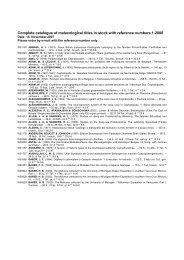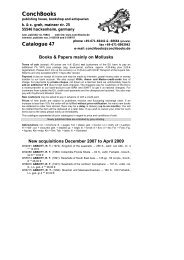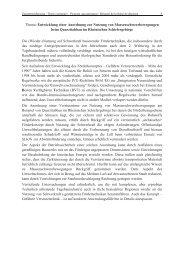Madeira Canary Islands Azores – Fishes Dr. Peter Wirtz
Madeira Canary Islands Azores – Fishes Dr. Peter Wirtz
Madeira Canary Islands Azores – Fishes Dr. Peter Wirtz
You also want an ePaper? Increase the reach of your titles
YUMPU automatically turns print PDFs into web optimized ePapers that Google loves.
Young animals (insert, below) are conspicuously red-banded, Their third to fifth dorsal fin rays are elongated.<br />
They live in shallow water. Adult females (photo below) and males (photo bottom right) live in deeper water.<br />
A photographic proof of the existence of this species at <strong>Madeira</strong> is needed; if you have it, please send a copy<br />
to peterwirtz2004@yahoo.com . Photo insert <strong>Peter</strong> <strong>Wirtz</strong>, the other two Rogelio Herrera.<br />
88<br />
Cow bream (Sarpa salpa)<br />
Up to 45 cm long. <strong>Madeira</strong>, <strong>Canary</strong> <strong>Islands</strong>, <strong>Azores</strong>. 0 <strong>–</strong> 40 m depth.<br />
The species can easily be recognized by its colour. The eyes are also golden-yellow! The English name is<br />
quite apt: Cow bream move in groups through shallow water and feed on plants. They are protandric sex<br />
changers: all juveniles turn into males with a size of about 20 cm; later they change sex and turn into females.<br />
This is the opposite of many other bream species, which are protogynous sex changers (female first, male<br />
later). Cow bream can reach an age of 15 years. Photo Pedro Vasconcelos.<br />
Black bream (Spondylisoma cantharus)<br />
Up to 55 cm long. <strong>Madeira</strong>, <strong>Canary</strong> <strong>Islands</strong>. 5 <strong>–</strong> 300 m depth.<br />
Females of the Black bream look silvery from a distance; the thin yellow lines can only be seen from close up.<br />
During the spawning season (April to July), the males clean large horizontal rocky areas in a depth of usually<br />
below 20 m and guard the eggs that the females glue there in a light, single layer. In the Eastern Atlantic,<br />
territorial males are black with a white vertical band. In the Mediterranean Sea, territorial males are coloured<br />
quite differently: light blue with dark blue bands. Photos <strong>Peter</strong> <strong>Wirtz</strong>.









